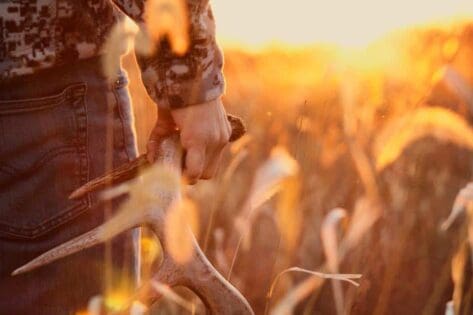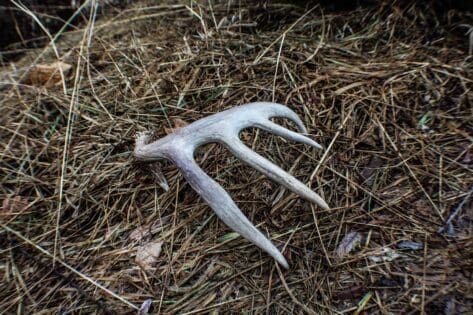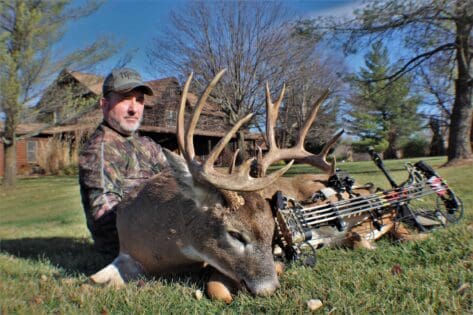The Art of Shed Hunting
With the month of March and the end of winter around the corner I begin to get excited about the antlers that could be lying around my hunting areas. I can’t wait to begin the search for those treasures that we hunt for all fall, that are now just sitting in the leaves for the taking. It is time to put some oil on the leather boots and wait for this latest snow to melt.

Now there are plenty of people out there who have been stomping around their woods for the last month in search of these antlers. Certainly, some have come back to the truck with some real nice finds to reward their efforts. I personally like to wait until late-Feb. or early March for several reasons. The first being that every time I enter the woods looking for sheds deer are being pushed around. That trophy deer could easily run over onto the neighbors’ farm and drop his antlers over there. The added pressure might just encourage him to stay over there as well and drop his antlers at a later date. You have to remember that these deer are just coming off a 3-month long hunting season and a stressful breeding season. All they want to do this time of year is recover from the stressful fall season. If you start turning over every stone too early you may ruin your chances completely. Also, my observations over the years have led me to believe that the majority of bucks shed their antlers during the month of February. Sure, some bucks shed as early as December and some as late as April, but I feel that over 50% of the bucks in the herd will drop their antlers in February (here in the Midwest). With that being said I want the most antlers on the ground as possible when I begin my search.
Now I am not saying that you early birds are doing it all wrong. I have certainly done my share of shed hunting in January and February, but during these times I prefer the low impact approach of just looking around the open fields and food plots where I will encounter few deer. I even try to limit most of my looking to driving around in a truck and glassing wherever possible. This usually curbs my antler appetite for a while and allows me to pick up the sore thumb sheds that someone else may easily spot. I know it’s hard to eat your pizza “crust first” but you will be rewarded for your patience.

Now I can offer up the traditional tips of hunting food sources, bedding areas, and travel corridors. I will even throw in that you should pay close attention to fence and creek crossings as these have been productive areas for me in the past. I would also suggest that you shed hunt on overcast days as the antlers contrast more to their surroundings in these conditions. The fact still remains that you need to plan on walking a ton. You may think that you have covered an area well enough, but I can assure you that you have not.
Years ago, I had a hardwood ridge that always produced quite a few sheds for me. This ridge was always the first place I headed to once I began searching the timber areas. It was a south facing slope full of oak trees that littered the ground with acorns. I would search this ridge in a grid pattern so I did not miss anything and would return to this spot multiple times in March to ensure that no sheds gave me the slip. On my third year of hunting this spot I found a shed that was several years old. It had been chewed up, was faded from the sun, and had a green algae growing on it. This would not normally surprise me except for the fact that I had walked this ridge dozens of times, over the years, and know that I passed within yards of this shed on multiple occasions. To top it off I had a tree stand that was nearly within bow range of this antler. So, even the most strategic effort to cover your farm effectively will not turn up every shed lying out there. Most sheds are missed because the hunter is looking too far ahead, confident that the cast antler will catch the attention of their eye.
So, keep your eyes close to the ground and cover lots of it. Let the leg cramps and blisters begin.
Best of Luck! Corey
Whitetail Deer Hunting Main Page Illinois Gun Hunts
Early Season Whitetail Hunting Hunting the Illinois Rut
Last Updated: February 22nd, 2022




